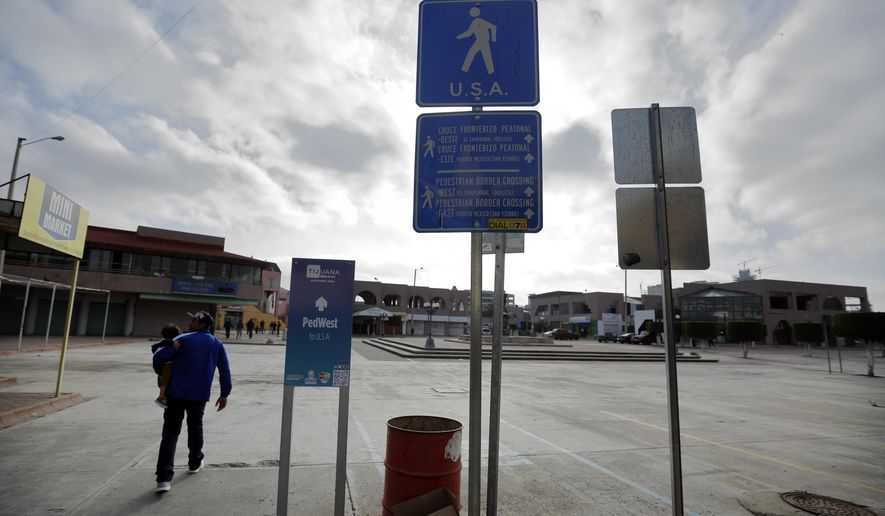A federal appeals court Friday blocked President Trump’s “remain in Mexico” policy, ruling it went beyond the boundaries of federal law — and eliminating the most important tool Homeland Security used to stem last year’s border surge.
Officially known as the Migrant Protection Protocol, the policy was used to push migrants who showed up at the U.S.-Mexico border back across the boundary, where they were told to wait for their immigration court dates in the U.S.
But the 9th U.S. Circuit Court of Appeals upheld a preliminary injunction, saying federal law doesn’t allow for such a blanket return policy.
Though the law specifically envisions being able to return some migrants across the border, the court in a 2-1 decision said that doesn’t apply to these migrants.
“The court forcefully rejected the Trump administration’s assertion that it could strand asylum seekers in Mexico and subject them to grave danger,” said Judy Rabinovitz, a lawyer with the American Civil Liberties Union who argued the case against the government. “It’s time for the administration to follow the law and stop putting asylum seekers in harm’s way.”
The Justice Department complained that the court’s ruling bungled the law and was too broad in covering the entire nation.
“The Ninth Circuit’s decision not only ignores the Constitutional authority of Congress and the administration for a policy in effect for over a year, but also extends relief beyond the parties before the court,” the department said in a statement.
The ACLU brought the case on behalf of migrants who arrived at the border demanding asylum.
They were returned to Mexico and made to wait for their proceedings.
In total, 59,000 people have been returned under the MPP.
Homeland Security officials say at least half give up their claims, which the officials said proves they didn’t have a valid claim in the first place.
Human-rights groups say those sent back to Mexico are targeted by kidnappers and other criminals. The advocates say returnees are easy marks because border authorities take their shoelaces away while processing them in the U.S., and don’t return the laces, making it easy for the criminals to know who they are.
It was not immediately clear what would happen to the 59,000 cases — though activists called on the U.S. government to immediately process them for entry.
The same three-judge panel also issued a second ruling against another Trump policy that sought to reject asylum claims by those who jumped the southwestern border.
The administration had argued asylum-seekers had other paths, and anyone who broke the law by jumping the border was deemed not to be a legitimate asylum-seeker. But the three-judge panel, ruling unanimously, said the law allows anyone along the southwest border to request asylum, no matter their means of entry.
“Together, the two decisions represent a significant setback for the Trump administration’s efforts to restrict asylum applications,” said Stephen Yale-Loehr, a professor at Cornell University Law School.
He predicted the Justice Department will seek an immediate stay from the Supreme Court.
The MPP was one of a number of moves the Trump administration made over the past two years to try to head off the massive surge of illegal immigrants from Central America, who had figured out loopholes in U.S. policy that allowed them to gain a foothold here, even if their claims would eventually be rejected.
Showing up as a family meant almost immediate release into communities, for example, and most of those migrants never bothered to show up for their hearings.
MPP denied them the foothold, and along with stiffer enforcement by Mexico of its own borders, helped cut the migrant crisis by about 75% from its peak last May.
• Stephen Dinan can be reached at sdinan@washingtontimes.com.




Please read our comment policy before commenting.